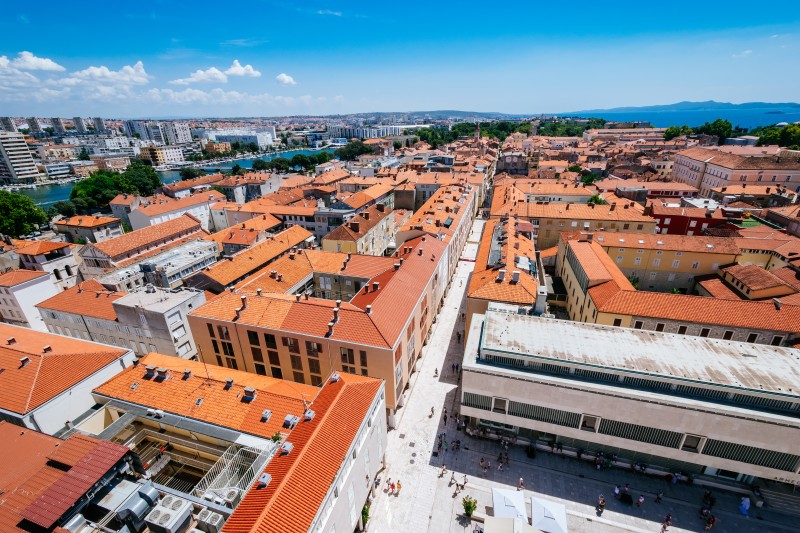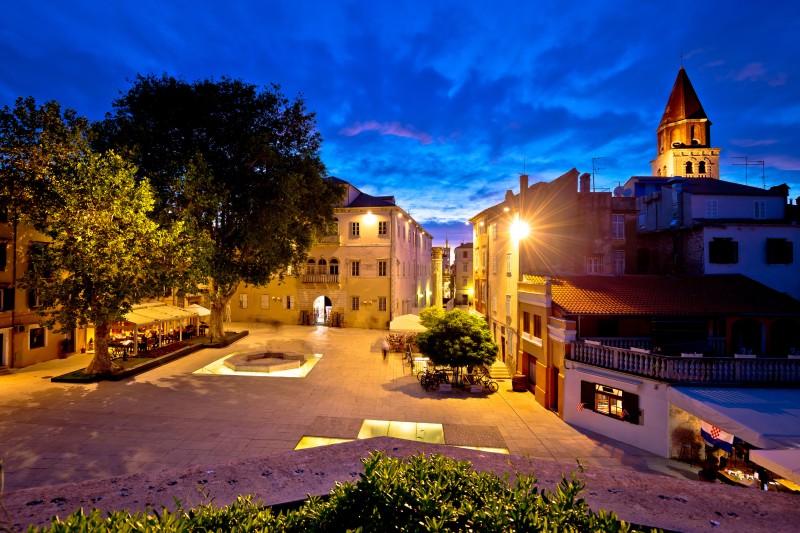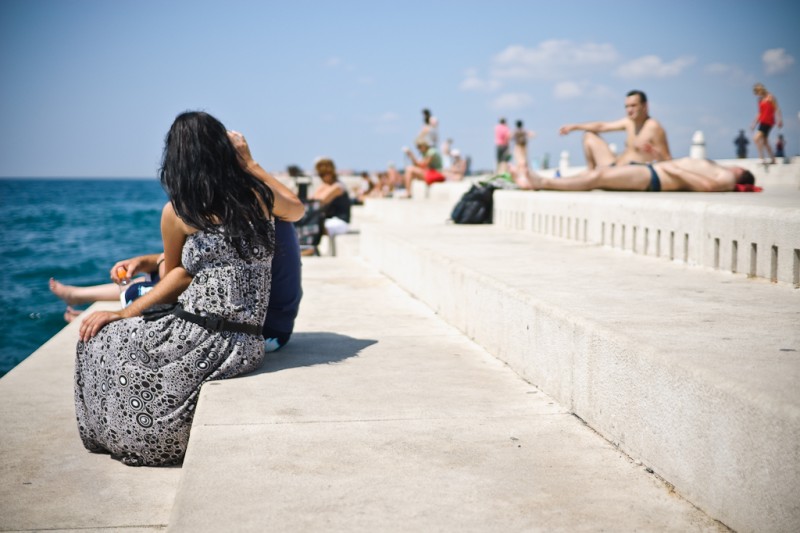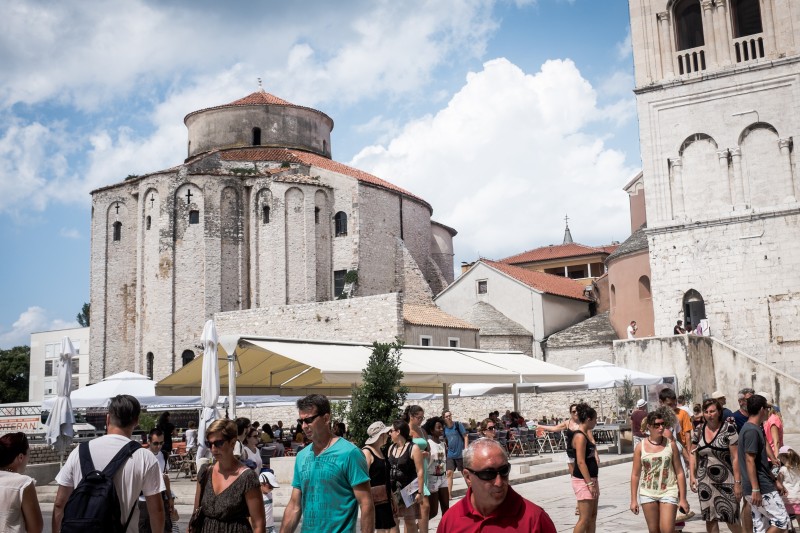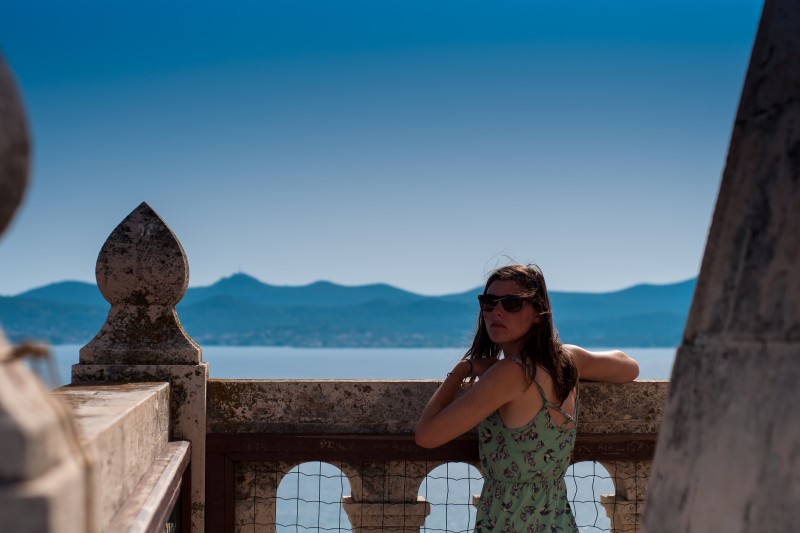Zadar and Zadar district
Zadar
Zadar is an ancient city, built in the center of the Croatian Adriatic, full of historical and cultural sights. In history, Zadar was first mentioned in the 4th century BC. as a settlement of the Illyrian tribe Liburna under the name Jader, and then through history it changed to Idassa (Greek source), Jadera (Roman source), Diadora, Zara (under the rule of Venice and later Italy), to the name Zadar.
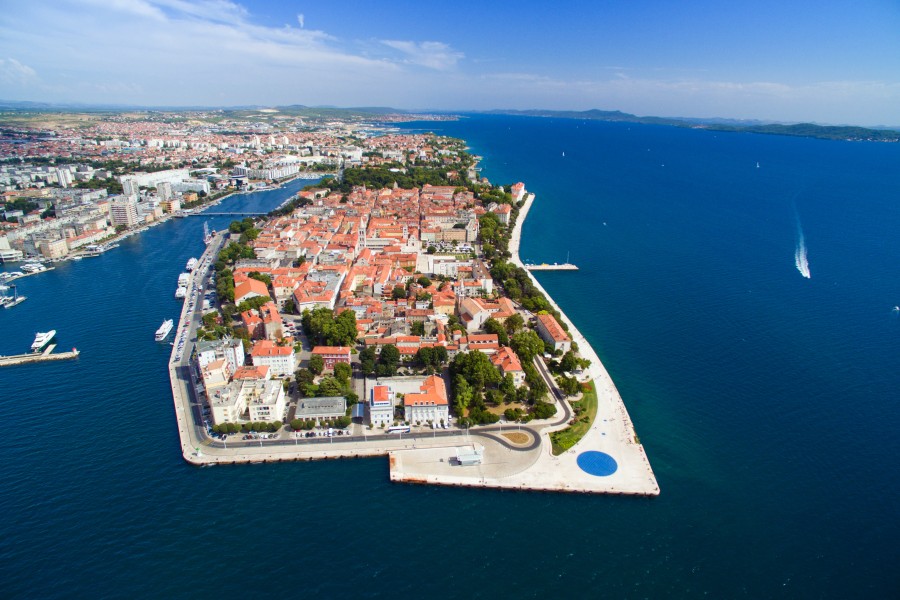
Today, the city of Zadar is a preserved monument of different historical times and cultures, which set the boundaries and visible contours of its urban appearance, and as during the past centuries of turbulent history, it is still protected by its four patron saints - St. Krševan, St. Šime, St. Stošija and St. Zoilo. It is the cultural, economic and administrative center of Northern Dalmatia. Although it is a culturally extremely attractive city, Zadar also accepts its role as a tourist center, and has been doing so for more than a hundred years. Namely, in 1899, the mountaineering tourist association "Liburnija" was founded in Zadar, which is one of the first tourist activities in Croatia.
There are ten modern marinas with almost 7,500 moorings in the surroundings of Zadar, as well as five national parks: Paklenica, Kornati, Plitvička jezera, Krka and Northern Velebit. Diving, alpinism, rafting and canoeing, freshwater and sea fishing, hundreds of kilometers of trails for mountain bikes, horseback riding - these are just a part of the offer that is provided for spending an active vacation. Zadar builds its attractiveness on the interweaving of culture with tourism, but also as a center of various specific offers and activities: nautical tourism and marinas, hotels, apartments and villas, small and large catering environments, beautiful beaches and swimming pools, promenades, excursions to interesting surroundings and others tourist events.
Since July 2017, Zadar has been on UNESCO's list of world cultural heritage. It is included in this list because of the three kilometer long Zadar city ramparts that were built in the 16th century by the Republic of Venice to defend against the Turks as part of the defense system that borders the Zadar peninsula.
Zadar attractions
It is almost impossible to enumerate all the attractions in Zadar, because the city, its surroundings and surrounding towns offer a handful of must-see places that offer unique experiences. Among the most famous modern attractions in Zadar are the Sea Organ and Salutation to the Sun.
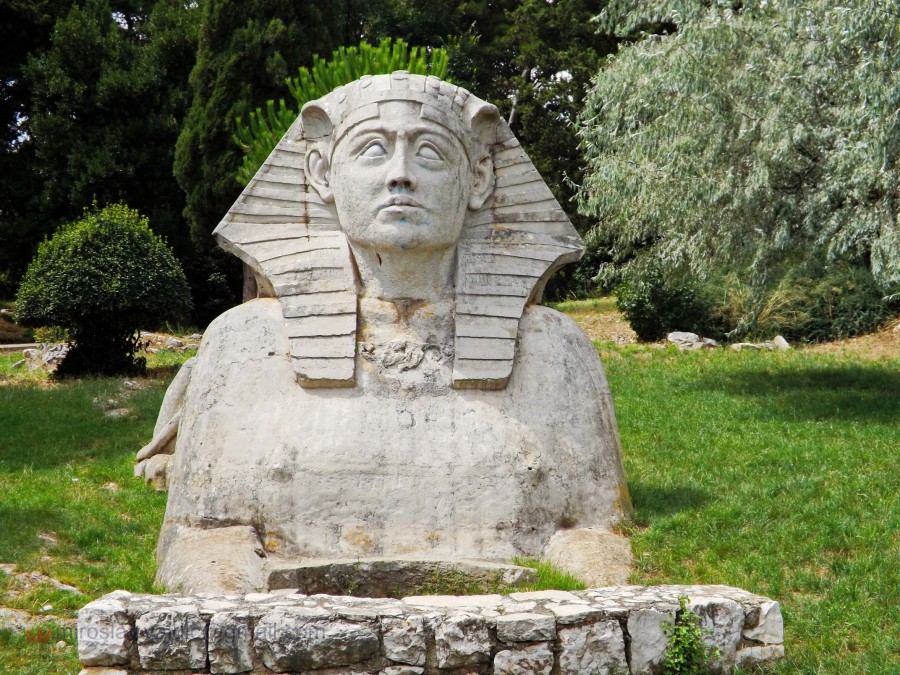
The sea organ is a stone staircase that stretches almost seventy meters along the coast. Below them, 35 pipes of different lengths, diameters and inclinations are installed, which, when the waves push air through them, emit sounds. Since the sea is unpredictable in its waves, strength, power, tides and ebbs, so is the sea organ concert unique and unrepeatable. The author of the Sea Organ is the architect Nikola Bašić.
Salutation to the Sun consists of three hundred multi-layered glass panels placed flush with the stone-paved waterfront in the form of a circle with a diameter of 22 meters. Under the conductive glass panels are photovoltaic solar modules through which symbolic communication with nature is realized, with the aim of achieving communication, as with the Sea Organ - in the case of the Sea Organ through sound, and here through light. Just as they share a goal, these two attractions also share an author - architect Nikola Bašić
A slightly older Zadar attraction is the Roman Forum. The main square of the Roman Iadero, where the entire public life of the city took place, is located in front of the church of St. Donat and the Archbishop's Palace. The Zadar Forum is one of the largest on the Adriatic. Its width is 45 meters and its length is 90 meters.
Another attraction in the very center of Zadar is the Prince's Palace. With the renovation of the Palace with EU funds in 2017, the city of Zadar received a modern cultural-historical complex and a new tourist attraction. The palace covers an area of 2,000 square meters and combines in one place the museum space, atrium, concert hall, halls for temporary exhibitions, video gallery, multimedia hall and spaces for education and creative expression.
National parks
There are as many as five national parks in the wider area of Zadar: Paklenica, Kornati, Plitvička jezera, Krka and Northern Velebit, and you can find out more about the natural beauties of Croatia at Croatian Parks.
The Kornati National Park forms a large part of the Kornati island group in the Croatian part of the Adriatic in central Dalmatia, west of Šibenik, in Šibenik-Knin County. It was declared a national park in 1980 and was then placed under protection. The total area of the park is about 220 km² and consists of 89 islands, islets and rocks. Of the surface of the park, only about 1/4 is land, while the remaining part is a marine ecosystem. The vertical cliffs of the "crown" of the Kornati islands facing the open sea are the most popular phenomenon of this park. They are also habitats of rare species.
Plitvice Lakes National Park was declared a national park in 1949. It is the largest, oldest and most visited Croatian national park. It represents a wooded mountain region where there are 16 lakes of different sizes, filled with crystal blue-green water. The lakes get their water from numerous rivers and streams, and are connected to each other by cascades and waterfalls. Travertine barriers, which were created over a period of ten thousand years, are one of the fundamental features of the Park. The first serious beginnings of tourism on the Plitvice Lakes date back to 1861, and in 2011 there were more than a million visitors for the first time in the history of this national park. Due to its diversity, UNESCO included this Croatian pearl in the list of World Natural Heritage.
Krka National Park is known for its large number of lakes and waterfalls. It was named after the river Krka, which is part of the park. The national park is located in central Dalmatia, downstream from Miljevac, and just a few kilometers northeast of the town of Šibenik. The lakes and waterfalls are crystal clear and attract many visitors with their unique natural beauty. The park is also home to the oldest hydroelectric power plant in Europe, and the second in the world – the Jaruga hydroelectric power plant. It was built on August 28, 1895, just three days after the world's first hydroelectric power plant at Niagara Falls.
Northern Velebit National Park - It became the Northern Velebit National Park in 1999. It is unique in that it is under the direct influence of three climates: Mediterranean, continental and alpine. Inside the park are the strict Hajdučki and Rožanski kukovi reserves, as well as Luka's cave - one of the deepest caves in the world discovered in 1999. The park is criss-crossed by numerous hiking trails, the most famous of which is the Premužić trail. The Velebit House in Krasno is a center for visitors to the Northern Velebit National Park. The layout of the "House of Velebit" extends over four floors and includes several thematic units that intertwine and interpenetrate each other in order to better show visitors the wealth of Velebit, its diversity and cultural and natural value.
National Park Paklenica - Paklenica National Park is the most famous alpinist center known even outside the borders of Croatia.
Nature parks
Nature park Vransko jezero is the largest lake in Croatia and, along the lower course of the Neretva River, is the only larger wetland in the Mediterranean part of Croatia.
Nature park Telašćica - Telašćica Bay is located in the southeastern part of Dugi otok. Thanks to its exceptional beauty, wealth and importance, this bay, surrounded by 13 islands and islets, and which also contains six islets within the bay, was declared a Nature Park in 1988.
Cities and islands
City of Nin
Nin is the first Croatian royal city. It is located only 14 kilometers from the port of Gaženica and is ideal for a half-day excursion. It was once one of the most important cultural centers, as evidenced by many monuments of early Croatian architecture of the eighth and ninth centuries. It has the smallest cathedral in the world and the coronation church of St. Nicholas. Don't forget to touch the thumb of the bronze statue of Gregory of Nin, bishop and great advocate of the Old Slavonic language and folk script. Folk tradition says that luck will follow you after that.
Island of Pag
The island of Pag is one of the largest Croatian islands, and is located 35 kilometers from the port of Gaženica. Its 270 kilometers of coastline make it the island with the longest coastline in the Adriatic, rich in bays, bays, beaches and capes. The largest bay - Paška bay - is surrounded by 20 km of pebble beaches. The island of Pag is unique in its vegetation, where trees are among the rarest forms of vegetation. Because of this, Pag is the largest kingdom of stony surface on the Adriatic where low grass and aromatic plants grow: sage and immortelle. They form the basis of the diet of the island's sheep, on the rocky terrain intersected by long dry walls. If you find yourself in Pag, be sure to try Pag cheese - a very famous (and delicious) delicacy.
Šibenik
Only an hour away from Zadar is Šibenik. It is also a city rich in history, and was mentioned for the first time on Christmas Day in 1066 in the grant document of King Petar Krešimir IV. that is why it is also called Krešimir's town. It was founded by Croats more than a thousand years ago, which makes it the oldest native Croatian city on the Adriatic. It is located in a picturesque, indented bay into which flows the Krka, one of the most beautiful Croatian karst rivers. The island part of Šibenik-Knin County consists of 242 islands, islets and rocks. The most numerous island group is the Kornati, which stand out for their extraordinary beauty, recognizable all over the world.
Šibenik is recognizable for its cultural and historical sights and natural beauty, and it can even boast of two monuments under UNESCO protection, the Cathedral of St. Jakov and the fortress of St. Nikola and two national parks, Krka and Kornati.
Cathedral of St. Jakov in Šibenik is one of the most significant and beautiful architectural achievements in Croatia, and in 2000 it was included in the UNESCO list of world cultural heritage. It was built over a hundred years, during the 15th and 16th centuries, and is unique in that it is completely built of stone and without the use of binding material. The most important builders of the cathedral are Juraj Dalmatinac and Nikola Florentinac. Due to the long construction, the cathedral is a combination of three different styles - Gothic, Gothic-Renaissance and Renaissance.
